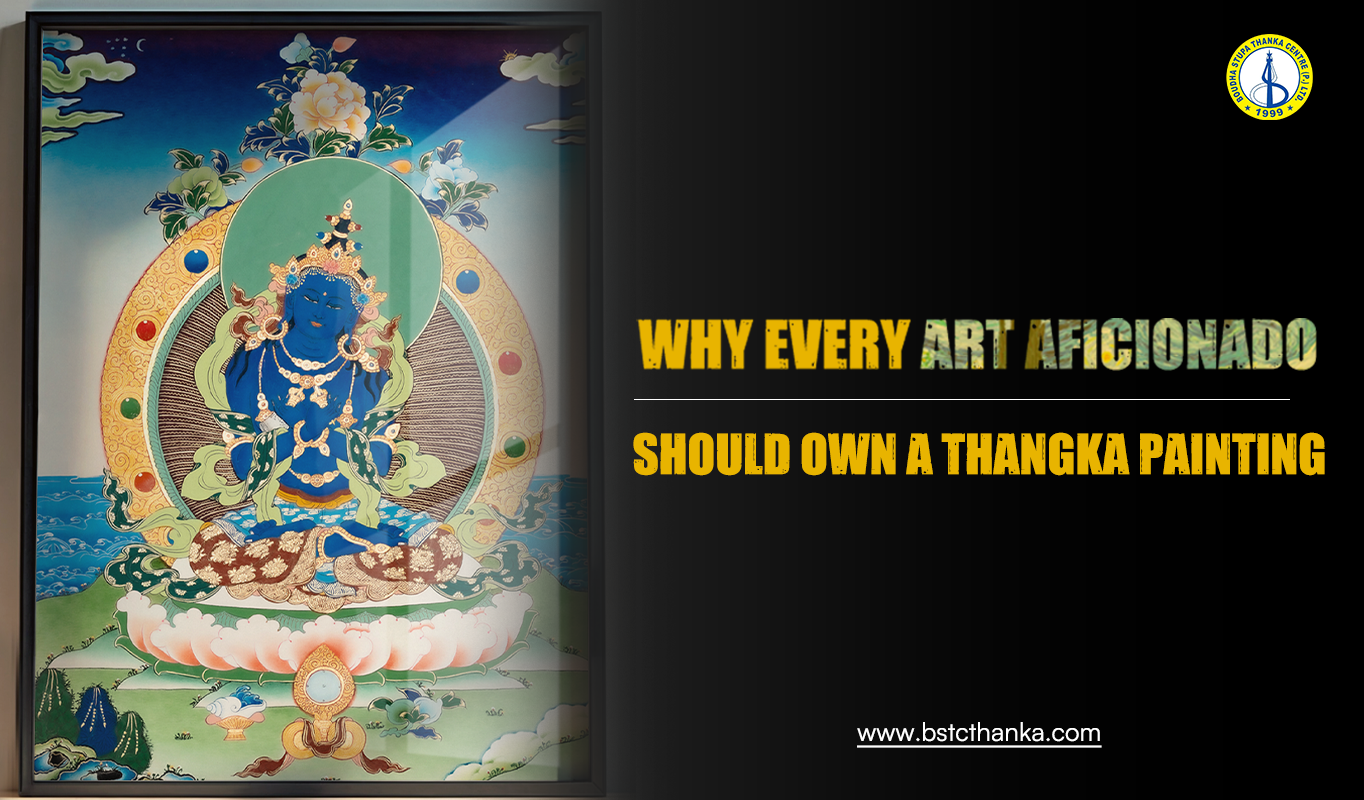
Why Every Art Aficionado Should Own a Thangka Painting?
Thangka paintings are an exceptional addition to any art collection, offering a rare blend of spirituality, intricate craftsmanship, and historical significance. For those who appreciate fine art with cultural depth, a Thangka for art collectors is a must-have. These sacred paintings are not just visually captivating but also hold immense artistic and investment value.
The Unique Appeal of Thangka Paintings
A Fusion of Spirituality and Artistry
Unlike conventional artworks, unique Buddhist art such as Thangkas serves a spiritual purpose while showcasing the incredible skill of the artists. Rooted in Tibetan Buddhist traditions, these paintings often depict deities, mandalas, and significant religious figures, each intricately detailed with natural pigments on cotton or silk.
The level of precision and dedication required to create a Thangka makes each piece one-of-a-kind. The use of gold leaf, semi-precious stone pigments, and precise brushwork adds to their uniqueness, making them a compelling choice for art collectors looking for something beyond conventional canvases.
Additionally, Thangkas are deeply embedded in Buddhist teachings and are used as meditation aids. Each brushstroke conveys spiritual meaning, making these paintings more than just decorative pieces. The connection between art and devotion enhances their value, attracting collectors who seek works with deeper philosophical significance.
The Value of Thangka Paintings for Collectors
A Timeless Investment
The value of Thangka paintings extends beyond their aesthetic and spiritual significance. Genuine Thangkas, especially antique or masterfully crafted contemporary pieces, appreciate in value over time. The rarity and limited number of high-quality Thangkas make them desirable assets in the art market.
Many museums and private collectors have recognized Thangkas as valuable cultural artifacts. As global appreciation for Buddhist art continues to grow, the demand for authentic Thangkas is rising, making them a lucrative investment. Some rare Thangkas have even fetched record prices at auctions, demonstrating their lasting worth.
Cultural and Historical Significance
Owning a Thangka is like possessing a piece of Buddhist history. These artworks have been used for meditation, spiritual guidance, and temple rituals for centuries. Collectors who value cultural heritage and historical richness will find Thangkas an invaluable addition to their collections.
Thangkas also tell stories of Buddhist teachings, historical figures, and cosmic principles. Each painting is a gateway to understanding a rich tradition that spans centuries. Owning a Thangka means owning a piece of a culture that has inspired millions worldwide.
How to Preserve Thangka Paintings
To maintain the beauty and longevity of a Thangka, collectors should adhere to proper preservation techniques:
-
Control Humidity & Temperature: Excess moisture can damage the silk and pigments, so keep Thangkas in a climate-controlled environment.
-
Frame with UV-Protected Glass: This prevents fading and protects the delicate artwork from external elements.
-
Avoid Direct Sunlight: Exposure to strong light can deteriorate the natural pigments.
-
Handle with Care: When moving or storing, ensure that the Thangka is rolled properly to avoid creases and damage.
-
Store in Silk Wrappings: Traditional silk wrappings help preserve the vibrancy of the pigments while keeping the fabric safe from dust and pollutants.
-
Professional Restoration: If a Thangka shows signs of wear, seek professional conservation experts who specialize in Tibetan art.
Following these steps will ensure that your Thangka for art collectors remains in pristine condition for generations.
Tips for Buying Authentic Thangka Paintings
With growing demand comes the risk of counterfeits. Here’s how collectors can ensure authenticity:
-
Buy from Reputable Sources
Purchase from trusted dealers, galleries, or Buddhist monasteries known for their high-quality Thangkas. BSTC Thangka Store, for instance, is a recognized name in this field. -
Check the Materials
Authentic Thangkas are painted with natural pigments derived from minerals, plants, and 24 Carat gold. If synthetic paints are used, the value diminishes significantly. -
Look for Traditional Techniques
Hand-painted Thangkas, especially those created using traditional Tibetan techniques, are more valuable than mass-produced prints. -
Inspect the Detailing and Symbolism
Every Thangka has deep spiritual meaning. Understanding the symbolism and checking the precision of details can help distinguish genuine works from imitations. -
Verify the Artist’s Credentials
Works from renowned Thangka painters hold greater value. Certificates of authenticity and artist backgrounds add credibility to the purchase. -
Compare Prices and Research
Conduct thorough research before making a purchase. If a deal seems too good to be true, it probably is. Comparing prices from multiple sources can help you gauge the true value of a piece. -
Consider Commissioning a Master Artist
Some collectors prefer commissioning a Thangka directly from a master artist to ensure authenticity and exclusivity. This guarantees a unique and custom-made work of art.
Why Thangkas Are a Must-Have for Art Aficionado
Blending Tradition with Aesthetic Appeal
A Thangka for art collectors is not just an artwork, it is a piece of Buddhist heritage, a sound investment, and a masterpiece of intricate craftsmanship. Whether you seek spiritual depth, cultural richness, or investment potential, adding a Thangka to your collection is a decision you will cherish for a lifetime.
Furthermore, as global interest in mindfulness and Buddhist philosophy increases, Thangkas are becoming a bridge between Eastern and Western art collectors. Many contemporary designers and collectors appreciate their profound visual storytelling and their ability to infuse spaces with a sense of peace and enlightenment.
From museums and private collections to meditation centers and luxury homes, Thangkas find their place in various settings, further increasing their desirability. Whether you're an experienced collector or just starting, owning a Thangka means embracing an art form that transcends time and geography.



